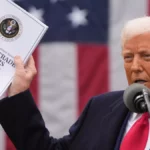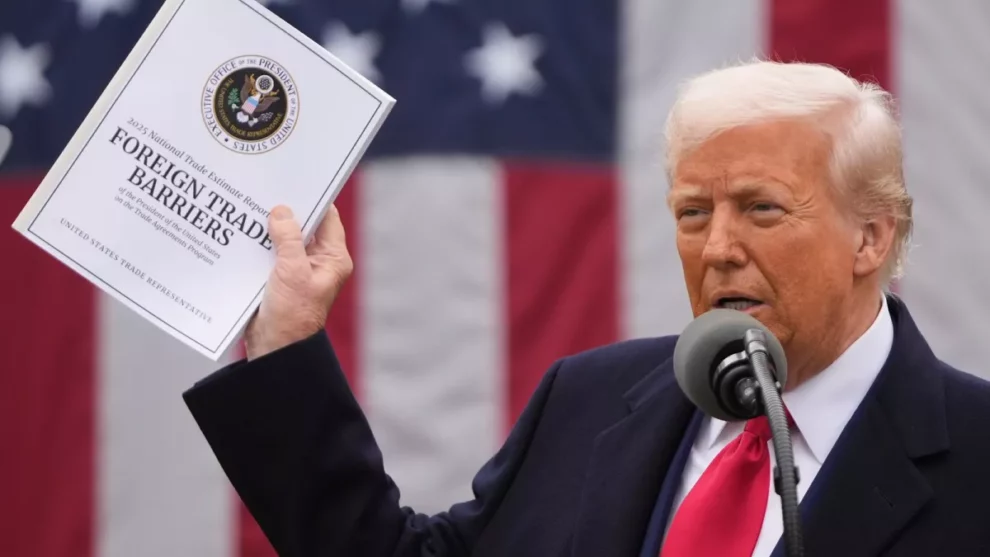The Trump administration has temporarily exempted computer chips and copper from its latest round of sweeping tariffs, offering a brief sigh of relief to electronics manufacturers and technology companies. However, according to a new report, this exemption may only be temporary—with targeted tariffs on semiconductors potentially arriving later this year. The move signals a strategic pause rather than a retreat from the administration’s broader trade agenda, leaving the tech industry in a state of cautious uncertainty.
A Temporary Respite for Critical Components
The decision to exclude semiconductors and copper from the latest tariff list comes after intense lobbying from technology firms, automakers, and defense contractors, all of whom rely heavily on these materials. Computer chips, in particular, are the backbone of modern electronics, powering everything from smartphones to military hardware. Imposing tariffs on them would have cascading effects across multiple industries, potentially increasing costs for consumers and disrupting supply chains already strained by pandemic-related delays.
Copper, another key exemption, is essential for wiring, circuit boards, and renewable energy infrastructure. A tariff on copper would have raised costs for construction, electric vehicles, and power grid projects—sectors the Biden administration has prioritized in its infrastructure plans.
Why the Delay on Chip Tariffs?
Sources familiar with the administration’s discussions suggest that the exemption is not permanent. Instead, officials are weighing a more targeted approach to semiconductor tariffs, possibly focusing on specific types of chips or countries of origin. The goal appears to be avoiding immediate economic disruption while still pressuring China and other trade rivals.
One possible reason for the delay is the ongoing global chip shortage, which has already caused production delays in automobiles, consumer electronics, and industrial equipment. Slapping tariffs on semiconductors now could worsen supply constraints and drive up prices at a politically sensitive time. By holding off, the administration may be waiting for supply chains to stabilize before introducing new trade barriers.
Industry Reaction: Relief Mixed With Anxiety
Tech industry groups have welcomed the temporary exemption but remain wary of future measures. The Semiconductor Industry Association (SIA) released a statement acknowledging the reprieve while urging the administration to consider the long-term implications of tariffs on innovation and competitiveness.
“Semiconductors are a global industry, and tariffs could disrupt the delicate supply chain that supports millions of American jobs,” the SIA warned. We encourage the administration to pursue policies that strengthen domestic chip manufacturing rather than penalize imports.
Automakers, which have faced severe production cuts due to the chip shortage, also expressed cautious optimism. However, some executives privately worry that if tariffs return later in the year, they could lead to higher vehicle prices just as the industry is recovering.
The Bigger Trade War Picture
The Trump administration’s tariff strategy has always been a mix of economic pressure and geopolitical maneuvering. By temporarily sparing chips and copper, officials may be trying to avoid alienating key industries while keeping the threat of future tariffs as leverage in trade negotiations.
China, the primary target of many U.S. tariffs, has been investing heavily in its own semiconductor industry to reduce reliance on foreign suppliers. If the U.S. eventually imposes chip tariffs, it could accelerate China’s push for self-sufficiency—potentially reshaping the global tech landscape in ways that disadvantage American firms in the long run.
What Comes Next?
The exemption for computer chips and copper is expected to last at least through the end of the year, but businesses are already preparing for possible changes in 2025. Some companies are stockpiling inventory, while others are exploring alternative suppliers in countries not subject to U.S. tariffs.
For consumers, the immediate impact may be minimal, but if tariffs return, they could lead to higher prices for electronics, cars, and appliances. The broader concern is whether these trade policies will achieve their intended goals—reshoring manufacturing and reducing reliance on foreign suppliers—or simply add costs without solving underlying supply chain vulnerabilities.
A Stay of Execution, Not a Pardon
The Trump administration’s decision to hold off on chip and copper tariffs offers a temporary reprieve, but the tech and manufacturing sectors are far from in the clear. With reports indicating that semiconductor tariffs could still arrive later, businesses must remain agile in an increasingly volatile trade environment.
For now, the exemption provides breathing room, but the looming threat of future tariffs ensures that uncertainty will remain a constant challenge for industries dependent on these critical materials. As the global economy navigates post-pandemic recovery and geopolitical tensions, the stakes for trade policy have never been higher.
















Add Comment